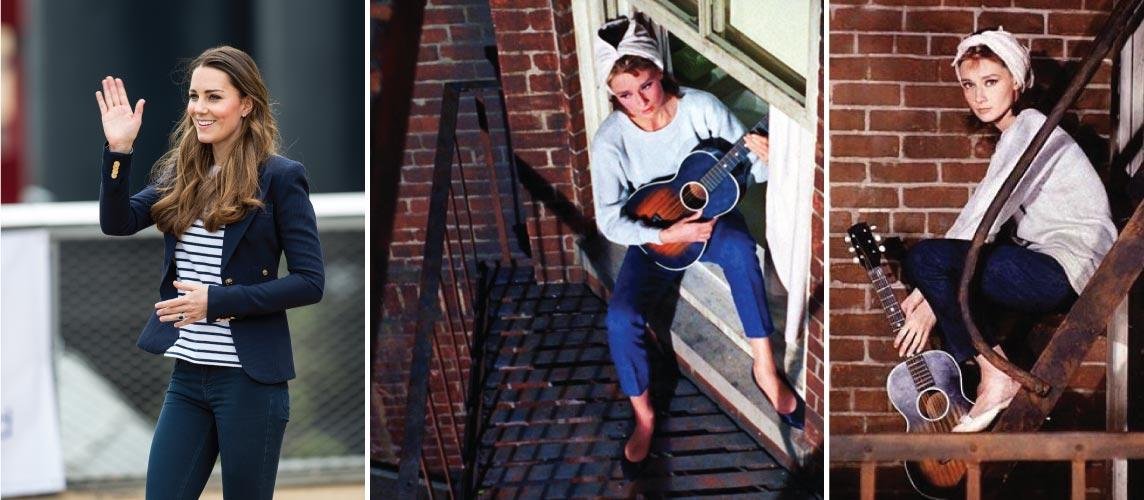We all have our favourite pair of jeans; our go to staple wardrobe piece, that gives us comfort and a style boost in any occasion. Now this pair of jeans may not be magical like the Sisterhood of the Travelling Pants, but no matter how worn out they get, its appeal increases magically. May it be the Duchess of Cambridge today, or Holly Goligthly in the 60’s, the denim fever could not be avoided by anyone, Royal and our beloved Moon River included.

But what made denim the iconic fashion piece that it is today? The answer is clear, Levi’s Strauss & Co. From being a dry goods haberdasher in 1853, to an all time classic in the fashion industry, Levi’s is a label that is worn with pride. Like fine wine, things are often said to improve with age and Levi’s and denim is no exception.

Levi’s is not only a denim brand, but a denim empire in itself. Lasting for 160 years in the industry with great relevancy takes extreme planning, research and strategy. However, in all the evolution, Levi’s has not changed its originality and the unique features that make the brand well known even today. Levi’s did not invent the denim, but they did market it efficiently.
There are numerous things that make a standard pair of Levi’s jeans iconic. Their iconic rivets that were originally created to endure sustainability for mill workers, was trademarked and patented and thus became one of the first branding elements of the brand. Stamped with the company initials and the patent date, the rivets have remained true to the brand since 1973. However, when the brands’ patent expired, competitors gushed to the opportunity to manufacture riveted jeans. This did not faze Levi’s and led to the rise of more branding elements.

The red and orange tabs on the Levi’s jeans are the world’s most recognizable trademarks. The famous red tab has featured gracefully on the pocket of Levi’s jeans since the earliest part of the 20th century. Originally known as the waist overall, the Levi’s jeans and its tab became a good identification feature to differentiate the brand from others. The tabs are not only a visual marker, but have their own functionality as well. The main difference between the standard red tab of Levi’s and the historical orange tab is the stitching and the design. The red Levi’s tab jeans have six rivets on the front pockets V/s the orange tab jeans which have only five. Additionally, the orange has seven belt loops with square back pockets. Red on the other hand has five belt loops with a top to bottom tapering pocket. This makes the tab an additional attribute for customers in identifying their favourite type of jeans. Two fish with one worm, right?
As years passed and new styles evolved, so did a number of new colour tabs, each representing new lines of clothing. From corduroy to an entire category of women wear, khakis, aesthetic black tabs on women’s black denim and so on, the tab device remained unique to Levi’s.

Today, jeans are often classified as Mid-Rise, Low-Rise, Straight Cut, Slim Fit, Boyfriend Jeans, Regular Fit etc. But Levi’s went a step ahead and created the number system. Popularly known for the 501, this number system comes extremely handy after having identified your preferred style.

Rivets, labels and a number system would seem plenty for any person. But for Levi’s it wasn’t. To overcome their expiring patent on the rivets, Levi’s also introduced the leather patch, a sturdy patch which carried the brand’s two horse logo which symbolized the strength of the pants, even for customers who could not read. The most expensive pair of Levi’s jeans is over 140 years old and was built to last!

The brand may seem extremely cool while reading about their inventions and histories. As a matter of fact, it was the cool brand from the 60s to the 90s, including the likes of James Dean and Marilyn Monroe. But as times passed, they experienced their own share of failures and a momentary loss of their coolness. Nevertheless, this never stopped them from constantly striving to retain their classic appeal. They are one of the few brands that have stuck with their original logo and have strategically used the adaptable logo. In spite of moving through the aesthetics of different eras, the brand scheme has remained loyal to the signature shape of the logo, popularly known as the “Batwing”. The greatest feature of the logo is that one can remove as many individual components from the logo as possible, but the brand identity is still recognizable and distinct.

“Live in Levi’s” is not just a tagline, it’s a lifestyle. You may go through hundreds of jeans in your lifetime, but the memories of your favourite Levi’s will always remain.



